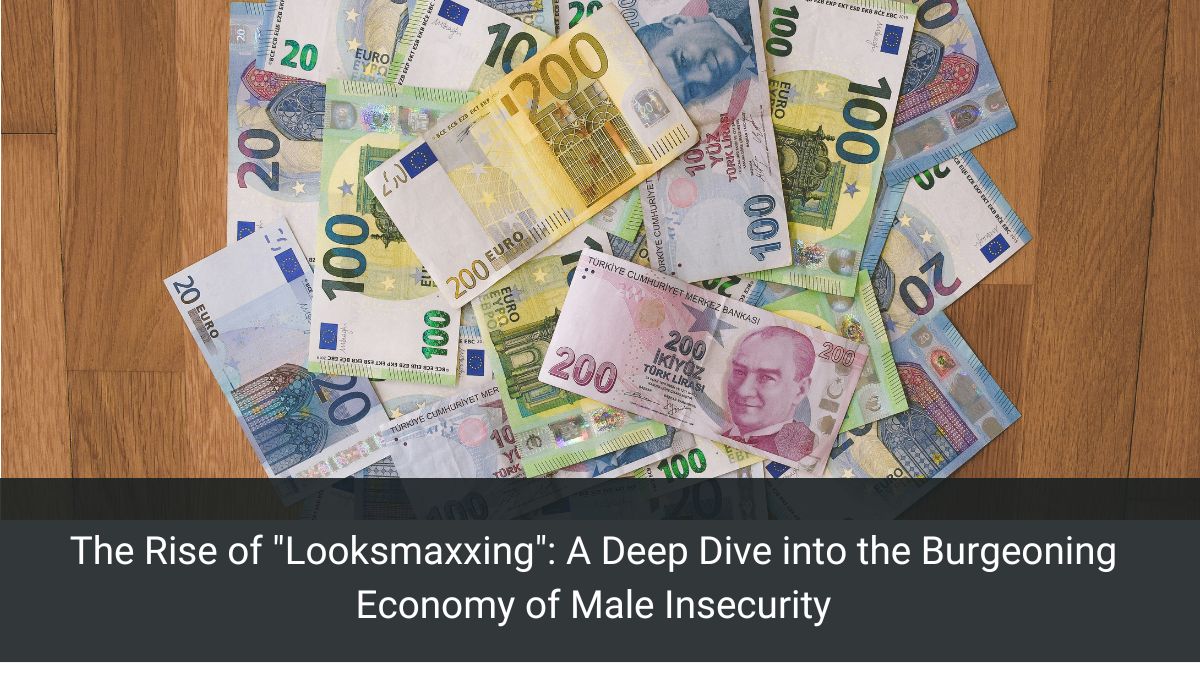Tech
The Rise of “Looksmaxxing”: A Deep Dive into the Burgeoning Economy of Male Insecurity

In the age of social media and instant gratification, a new trend has emerged that’s captivating the attention of young men worldwide. “Looksmaxxing,” a portmanteau of “looks” and “maximizing,” has become more than just a buzzword—it’s a full-fledged movement with far-reaching implications. This article explores the phenomenon, its economic impact, and the potential psychological consequences for its adherents.
The Genesis of Looksmaxxing
From Heartbreak to Hashtag
The story of Dillon Latham serves as a perfect microcosm of the looksmaxxing movement. At 17, reeling from a breakup, Latham threw himself into self-improvement with a fervor that would soon captivate millions. His transformation from heartbroken teen to social media influencer is a testament to the power of this trend.
I remember my own high school days, when a bad haircut or an ill-fitting outfit could feel like the end of the world. But the pressures faced by today’s youth seem to have multiplied exponentially. The constant barrage of perfectly curated images on social media has created a breeding ground for insecurity and self-doubt.
The Viral Spiral
Latham’s success story is far from unique. Across platforms like TikTok and Instagram, looksmaxxing content has exploded in popularity. Videos promising to reveal the secrets of attractiveness rack up billions of views, with captions like “this is making you ugly” serving as irresistible clickbait for insecure teens.
The Economics of Insecurity
A Booming Industry
The looksmaxxing trend has given rise to a thriving economy. From specialized skincare products to jaw-exercising gum, entrepreneurs are cashing in on male insecurities. Latham himself claims to be making six figures monthly from his hairspray brand and social media presence.
But perhaps the most striking example of this new economy is the UMAX app. Launched in December, this AI-powered application claims to rate users’ attractiveness and offer tips for improvement. With reported monthly subscription revenue of $500,000, UMAX exemplifies the lucrative potential of the looksmaxxing market.
The TikTok Shop Effect
The integration of e-commerce into social media platforms has supercharged the looksmaxxing economy. TikTok Shop, in particular, has been a game-changer. As Latham puts it, “you can literally just buy a product on the same screen that you watch the video.” This frictionless purchasing experience has made it easier than ever for influencers to monetize their content.
The Dark Side of Perfection
Psychological Toll
While the economic benefits for influencers and entrepreneurs are clear, the psychological impact on consumers is concerning. Tom Hildebrandt, a clinical psychologist at the Icahn School of Medicine at Mount Sinai, warns of an “erosion of the sense of self” among those who become obsessed with looksmaxxing.
The constant feedback loop of negative self-perception and consumption of “improvement” content can lead to a destructive cycle. As someone who has struggled with body image issues in the past, I can attest to the allure of quick fixes and miracle solutions. But the promise of perfection often comes at a steep price—both financially and emotionally.
The Gender Gap Narrows
Interestingly, the rise of looksmaxxing seems to be narrowing the gender gap in body dysmorphia and eating disorders. Sera Levelle, a clinical psychologist in New York, reports that her patient base has shifted from predominantly female to an even split between males and females over the past decade.
This trend suggests that the pressures traditionally associated with female beauty standards are now being felt equally by young men. It’s a sobering reminder that in the pursuit of equality, we may sometimes find ourselves equalizing our struggles rather than our triumphs.
The Role of Social Media Platforms
A Double-Edged Sword
Social media platforms find themselves in a precarious position. On one hand, they provide a space for self-expression and community building. On the other, their algorithms often amplify harmful content and exacerbate insecurities.
While some platforms have taken steps to address these issues—such as TikTok’s warnings on weight loss content—critics argue that these measures don’t go far enough. The ease with which users can find potentially dangerous looksmaxxing advice, like “bone smashing” tutorials, is alarming.
Looking to the Future
A Call for Balance
As we grapple with the implications of the looksmaxxing trend, it’s crucial to strike a balance between self-improvement and self-acceptance. While there’s nothing inherently wrong with wanting to look and feel your best, the pursuit of an unattainable ideal can be deeply damaging.
I’m reminded of a quote by the philosopher Bertrand Russell: “The fundamental cause of trouble in the world today is that the stupid are cocksure while the intelligent are full of doubt.” In the context of looksmaxxing, we might say that those selling certainty are profiting from those plagued by doubt.
A Path Forward
As consumers, we must approach looksmaxxing content with a critical eye. As a society, we need to have honest conversations about the pressures facing young people and work towards creating a culture that values diversity in appearance.
Ultimately, true self-improvement comes not from conforming to an arbitrary standard of beauty, but from developing confidence, compassion, and character. These are the qualities that will serve us well long after the latest beauty trend has faded.
In conclusion, the looksmaxxing economy is a complex phenomenon with far-reaching implications. As we navigate this landscape, let’s strive to create a world where everyone feels valued for who they are, not just how they look. After all, isn’t that the most attractive quality of all?
